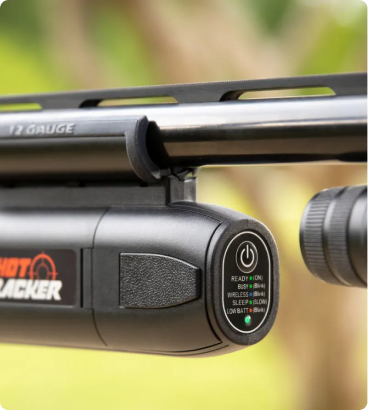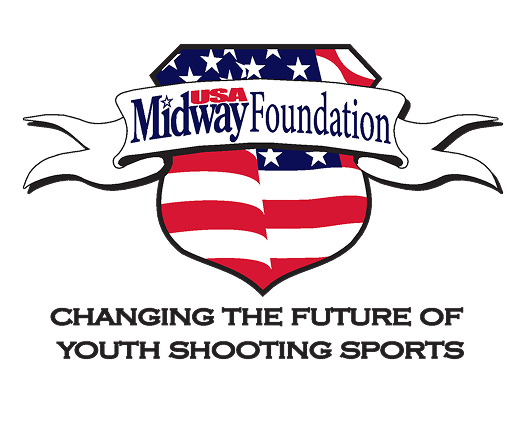A Coach’s Guide to ShotTracker – Maximizing Training Sessions
For coaches in shotgun sports, balancing one-on-one feedback with managing a group of shooters can be challenging. ShotTracker offers a high-tech assist, acting like an extra set of eyes on every shot. This guide is for coaches who want to integrate ShotTracker into their training sessions effectively. By leveraging the device’s real-time data and analytics, coaches can make each practice more productive for every athlete on the squad.
Getting Started with ShotTracker
Before introducing ShotTracker to your team, take time to get familiar with it yourself. Setup is straightforward – the unit mounts to the shotgun barrel, and the companion app connects via Bluetooth. During initial setup, use the Auto Bore Sight feature (discussed later) to ensure the device’s camera and sensors align perfectly with the shotgun’s point of aim. It’s wise to create profiles in the app for each shooter (or at least each shotgun) so that data is organized and can be reviewed separately. As a coach, consider spending an afternoon testing the ShotTracker on a few clay targets to understand the kind of feedback it provides (swing path, timing, shot placement, etc.). This firsthand experience will help you explain the device to your athletes and answer their questions.
Identifying Key Metrics for Improvement
ShotTracker produces a variety of data points, but as a coach you’ll want to focus your athletes on a few key metrics at a time. For a beginner, that might be something simple like shot timing – e.g. how long after the target emerges are they pulling the trigger? For more advanced shooters, you might look at metrics like muzzle velocity (how quickly they swing) or the smoothness of their follow-through. The app will show metrics and even visualize the shot path. Sit down with your shooter and highlight one or two metrics that relate to what you’ve been working on. For instance, if a shooter tends to shoot behind crossing targets, focus on the lead distance data (how far ahead of the target their shot was). By identifying this, you give the athlete a concrete aspect to improve (“Increase your lead by a foot on station 4 targets,” for example). This targeted approach prevents information overload and gives clear direction.
Customizing Practice Drills with Data
Once you know what metrics to improve, design drills that address them and use ShotTracker to measure progress. Suppose a shooter’s data shows inconsistency in follow-through (maybe the shot paths vary widely). You could set up a drill where the athlete shoots a series of straightaway targets focusing on maintaining their swing after the shot. With ShotTracker, after each attempt you both review the trace of the shot path – did the barrel continue smoothly or cut off? If the traces start to look more consistent as the drill goes on, the shooter gets immediate validation that they’re improving. Another example: if reaction time is an issue (taking too long to shoot), a coach can call for targets at unpredictable intervals while the shooter’s mounted and ready. ShotTracker will capture the delay between target release and shot. The shooter can treat it like a game, trying to shave a fraction of a second off their reaction with each attempt. The device essentially turns drills into interactive training, where the feedback loop is instantaneous.
- Tip: Rotate the ShotTracker device through multiple athletes if you have only one. While one shooter uses it, others can observe. This keeps the whole squad involved and learning, even when only one person is live-firing with the device.
- Tip: Use the historical data feature to set personal “baselines” for each shooter. For example, note an athlete’s average hit rate or reaction time at the start of the season. Revisit these stats periodically; seeing progress in numbers keeps shooters motivated.
Blending Tech with Traditional Coaching
While ShotTracker provides data, the human element of coaching remains crucial. It’s best used to augment, not replace, your observations. For example, you might notice a shooter lifting their head off the stock when they shoot – a classic mistake. You remind them to keep their cheek down. Now, incorporate ShotTracker: show them the data indicating their point of impact is high above the target, reinforcing your point that lifting the head caused the miss. In this way, the technology reinforces traditional coaching advice. Athletes often respond well to this double input; it clicks for them when they feel the recoil, hear your advice, and see the data all together. As another instance, consider confidence and nerves. If a shooter is in a slump, you as a coach provide emotional support and encouragement. Alongside that, pull up their ShotTracker history to point out, “Last month you were hitting 15/25, and now you’re at 20/25 – you’ve improved a lot.” Marrying the empathetic, motivational side of coaching with data-driven evidence can accelerate breakthroughs.
Efficient Group Management
For coaches handling a group, ShotTracker can help pinpoint who needs attention most. After a round, you could review each shooter’s data and quickly spot trends: maybe one athlete’s swing speed is markedly slower than others, or another is consistently missing targets to the left (indicating a potential timing issue). This allows you to individualize follow-up practice. Perhaps split the group into stations based on what they need to work on – one station for those practicing faster reactions, another for those working on follow-through – and rotate with the device to measure each station’s focus area. This data-centric approach ensures no athlete gets overlooked. Even quieter athletes who may not speak up about their struggles will have their challenges highlighted in the stats, cueing you to step in with assistance.
Conclusion
Integrating ShotTracker into coaching can elevate the quality of training sessions for both individual shooters and teams. By zeroing in on key metrics, customizing drills, and blending data with tried-and-true coaching techniques, a coach can address each athlete’s needs more precisely. The result is faster improvement, a motivated group of shooters, and a more efficient practice overall. Embracing technology like ShotTracker, while still applying the art of coaching, strikes a winning balance that benefits everyone on the range.




